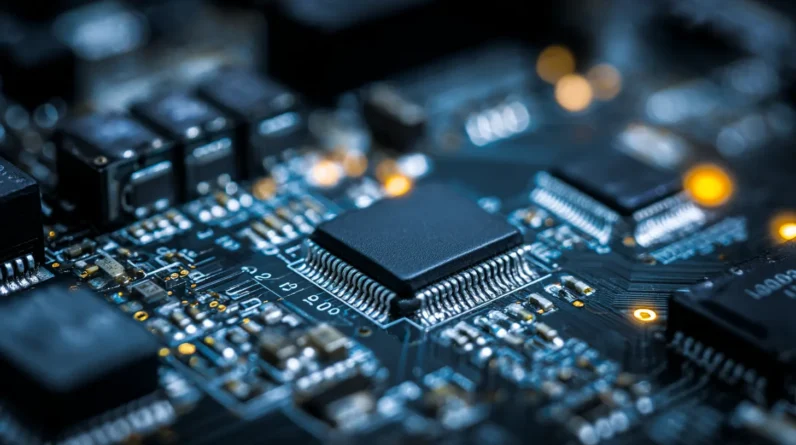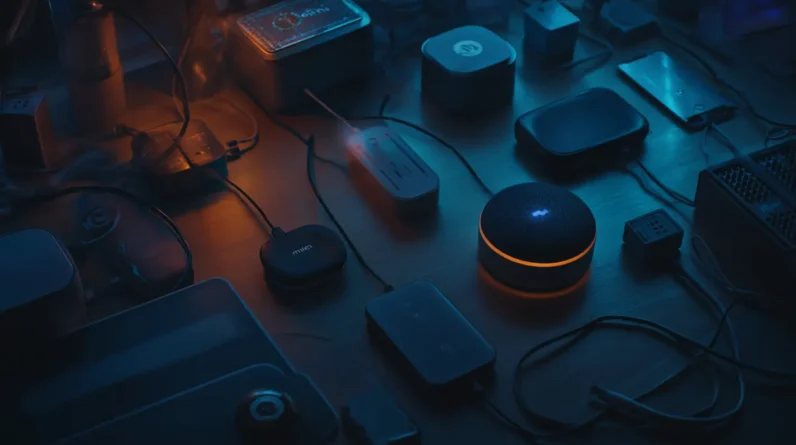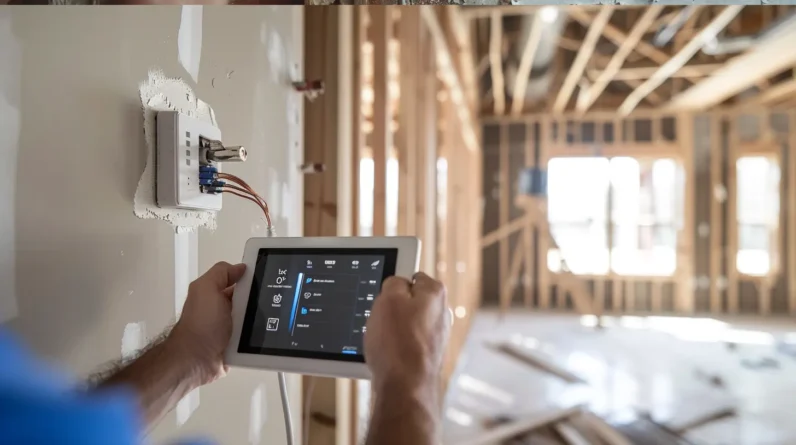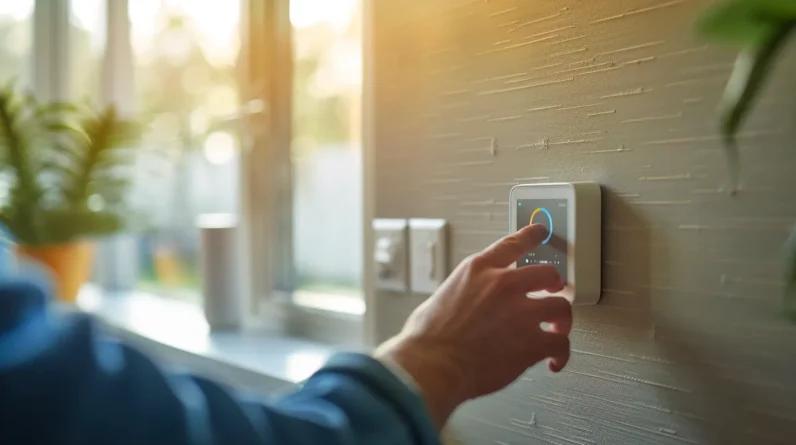
With an increasing desire for sustainable living and the rising popularity of smart home technology, homeowners now have the opportunity to harness the power of renewable energy sources while enjoying the convenience and efficiency of a connected lifestyle.
By carefully selecting and installing renewable energy systems, and maximizing energy efficiency through smart home technology, individuals can create a harmonious and eco-friendly living environment.
Key Takeaways
– Integrating renewable energy in your smart home reduces dependence on traditional energy sources.
– It decreases environmental impact and contributes to a cleaner and more sustainable future.
– It is cost-effective in the long run, with incentives and tax credits available.
– It provides energy independence and resilience, with the ability to store excess energy and provide backup power during outages.
The Benefits of Renewable Energy for Your Smart Home
One of the key advantages of integrating renewable energy in your smart home is the ability to reduce both your dependence on traditional energy sources and your environmental impact.
Renewable energy sources such as solar power and wind energy provide a sustainable and clean alternative to fossil fuels. By harnessing these sources, you can significantly decrease your reliance on non-renewable resources like coal, oil, and natural gas.
In addition to being environmentally friendly, renewable energy can also be cost-effective. While the initial investment in solar panels or wind turbines may seem high, the long-term savings on energy bills can be substantial. According to the U.S. Department of Energy, homeowners who switch to solar energy can save an average of $20,000 over 20 years. Furthermore, many governments and utility companies offer incentives and tax credits to encourage the adoption of renewable energy, further reducing the financial burden.
With the ability to generate your own electricity, you are less vulnerable to power outages and fluctuations in energy prices. This can provide a sense of freedom and security, knowing that your home will continue to function even during grid disruptions.
Choosing the Right Renewable Energy Sources for Your Home
When considering the integration of renewable energy in your smart home, it is essential to carefully choose from the various available sources in order to maximize efficiency and meet your specific energy needs. Evaluating costs and determining feasibility are crucial steps in this process.
One of the most popular renewable energy sources for residential use is solar power. Solar panels convert sunlight into electricity, which can be used to power your home. They are an excellent option for homeowners living in sunny regions, as they can generate a significant amount of energy. However, it is important to consider the upfront cost of installation and maintenance, as well as the availability of sunlight in your area.
Another renewable energy source to consider is wind power. Wind turbines harness the power of the wind and convert it into electricity. They are most effective in areas with consistent and strong winds. However, wind turbines can be expensive to install and may require a large amount of space.
Hydroelectric power is another option, particularly for homeowners near a water source such as a river or stream. Small-scale hydroelectric systems can generate a significant amount of electricity, but they require access to flowing water.
Geothermal energy, which utilizes heat from the earth, is also an option to consider. Geothermal systems can provide heating, cooling, and hot water for your home. However, they require a significant upfront investment and may not be feasible in all locations.
When evaluating costs and determining feasibility, it is important to consider factors such as the availability of resources in your area, the cost of installation and maintenance, and any regulations or incentives that may impact your decision. By carefully considering these factors, you can choose the right renewable energy sources for your smart home and make a positive impact on the environment while saving on energy costs.
Installing Renewable Energy Systems in Your Smart Home
To ensure the successful integration of renewable energy in your smart home, you must carefully plan and execute the installation of renewable energy systems. Here are some key considerations when installing renewable energy systems in your smart home:
Evaluate your energy needs: Before installing any renewable energy system, it is important to assess your energy needs. Consider factors such as the average energy consumption of your household, peak usage times, and the specific energy demands of your smart home devices.
Choose cost-effective solutions: When selecting renewable energy systems, it is crucial to consider the cost-effectiveness of the solutions. Compare the upfront costs, maintenance requirements, and potential energy savings of different options such as solar panels, wind turbines, or geothermal systems.
Take advantage of government incentives: Many governments offer incentives and rebates to encourage the adoption of renewable energy. Research the available programs in your area to see if you qualify for any financial support or tax benefits. These incentives can significantly reduce the overall cost of installing renewable energy systems.
Maximizing Energy Efficiency With Smart Home Technology
In order to achieve optimal energy efficiency in your smart home, it is essential to leverage the capabilities of smart home technology.
Smart home automation allows you to control and monitor various devices and systems in your home, enabling you to make informed decisions about energy usage.
By implementing energy-saving tips and utilizing smart home technology, you can reduce your energy consumption and lower your utility bills.
One of the key features of smart home automation is the ability to intelligently manage your lighting. Installing smart lighting systems that can be controlled remotely or programmed to turn off when not in use can significantly decrease energy waste. Additionally, integrating sensors that automatically adjust lighting levels based on natural light can further optimize energy efficiency.
Another area where smart home technology can maximize energy efficiency is in heating and cooling. Smart thermostats allow you to program temperature settings based on your schedule and preferences, ensuring that energy is not wasted when you are away from home. These thermostats can also learn your behavior patterns and adjust temperature settings accordingly, further reducing energy consumption.
Smart home automation enables you to monitor and control energy usage of appliances and electronics. By utilizing smart plugs or power strips, you can remotely turn off devices that are not in use, preventing standby power consumption. Additionally, energy monitoring systems provide real-time data on energy usage, allowing you to identify energy-hungry devices and make informed decisions to reduce their usage.
Managing and Monitoring Renewable Energy in Your Smart Home
One important aspect of managing and monitoring renewable energy in your smart home is implementing an effective system for tracking and analyzing energy production and consumption. This allows you to make informed decisions regarding energy usage and optimize your energy consumption.
Here are three key benefits of tracking energy usage in your smart home:
1. Identifying energy wastage: By monitoring your energy consumption, you can pinpoint areas where you may be wasting energy. This could be due to inefficient appliances, energy leaks, or unnecessary energy usage. By identifying these wasteful practices, you can take steps to eliminate them and reduce your overall energy consumption.
2. Monitoring renewable energy production: If you have installed solar panels or other renewable energy systems in your home, tracking energy production allows you to see how much energy is being generated. This helps you understand the effectiveness of your renewable energy system and evaluate its contribution to your overall energy needs.
3. Optimizing energy consumption: By analyzing your energy usage patterns, you can identify peak usage times and adjust your energy consumption accordingly. This could involve scheduling energy-intensive activities during off-peak hours or using smart devices to automatically adjust energy usage based on real-time data. By optimizing your energy consumption, you can reduce your reliance on the grid and maximize the benefits of your renewable energy sources.
Frequently Asked Questions (FAQs)
What Are the Upfront Costs Associated With Installing Renewable Energy Systems in a Smart Home?
Cost considerations for installing renewable energy systems in a smart home include upfront expenses such as equipment, installation, and permits. Financing options, like loans or leasing, can help mitigate these costs and make renewable energy more accessible to homeowners.
How Long Does It Typically Take to Recoup the Initial Investment in Renewable Energy Systems for a Smart Home?
The recouping period for the initial investment in renewable energy systems for a smart home varies depending on factors such as the cost of the system, energy savings, and government incentives. Return on investment can typically range from 5 to 20 years.
Are There Any Government Incentives or Tax Credits Available for Homeowners Who Install Renewable Energy Systems in Their Smart Homes?
Government incentives and tax credits are available for homeowners who install renewable energy systems in their smart homes. These financial benefits help offset upfront costs and can significantly reduce the payback period. Integrating renewable energy with existing technology may require additional equipment, and ongoing maintenance and upkeep are necessary for optimal performance.
Can Renewable Energy Systems Be Integrated With Existing Smart Home Technology, or Is Additional Equipment Required?
Renewable energy system compatibility with existing smart home technology is a key consideration for homeowners. Integrating renewable energy in a smart home offers numerous benefits, including reduced energy costs, improved energy efficiency, and decreased environmental impact.
What Maintenance and Upkeep Is Required for Renewable Energy Systems in a Smart Home?
Maintenance requirements and upkeep procedures for renewable energy systems in a smart home vary depending on the specific technology used. For example, solar panels may require regular cleaning and inspection to ensure optimal performance and longevity.
Conclusion
Integrating renewable energy sources in your smart home offers numerous benefits. These include reduced carbon emissions, lower energy costs, and increased energy independence.
By choosing the right renewable energy systems and maximizing energy efficiency with smart home technology, you can effectively manage and monitor your renewable energy usage.
Embrace the power of renewable energy and watch as your smart home becomes a sustainable and eco-friendly oasis. As the saying goes, “Harness the energy of the sun and let your smart home shine bright.”







